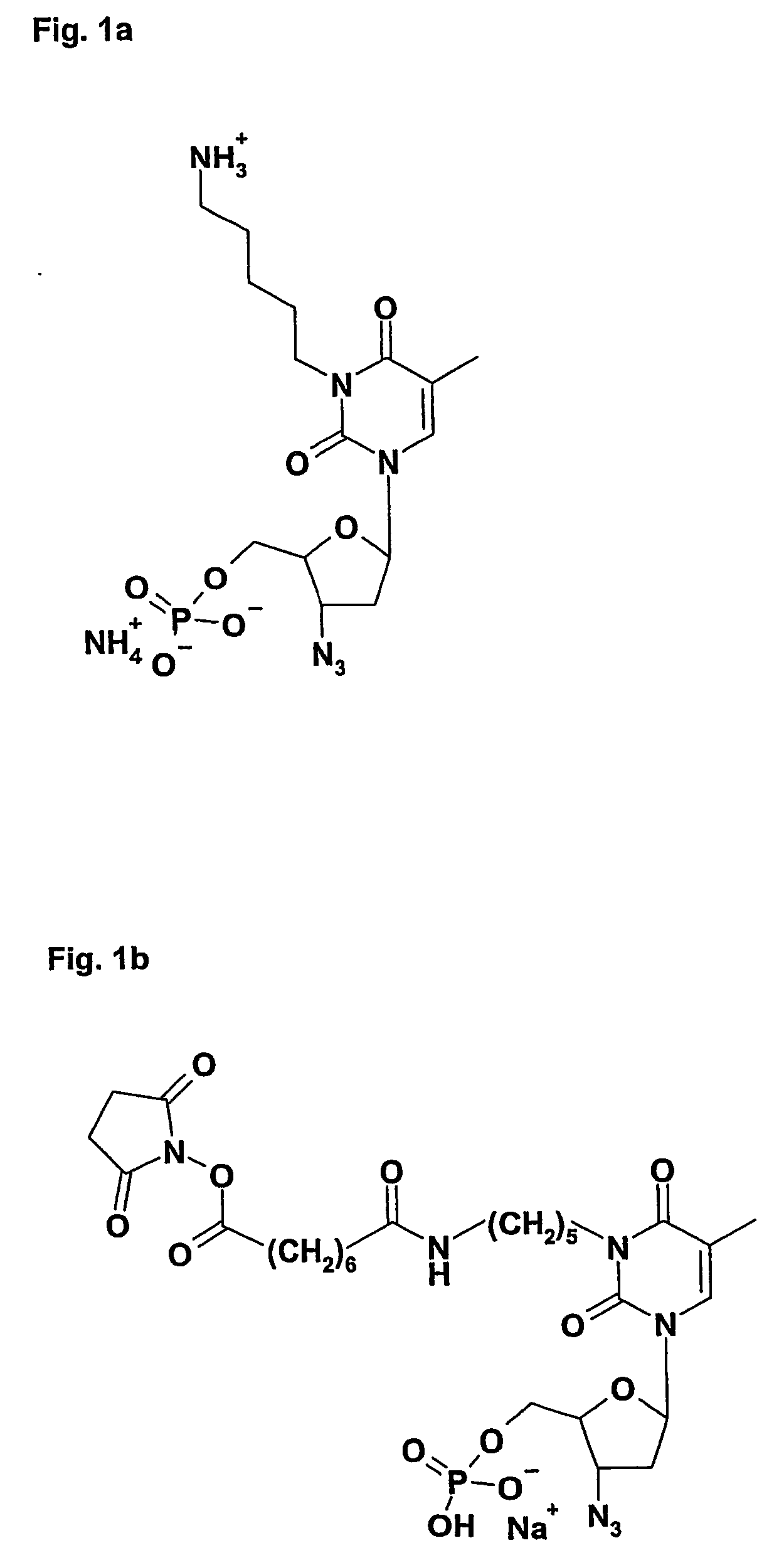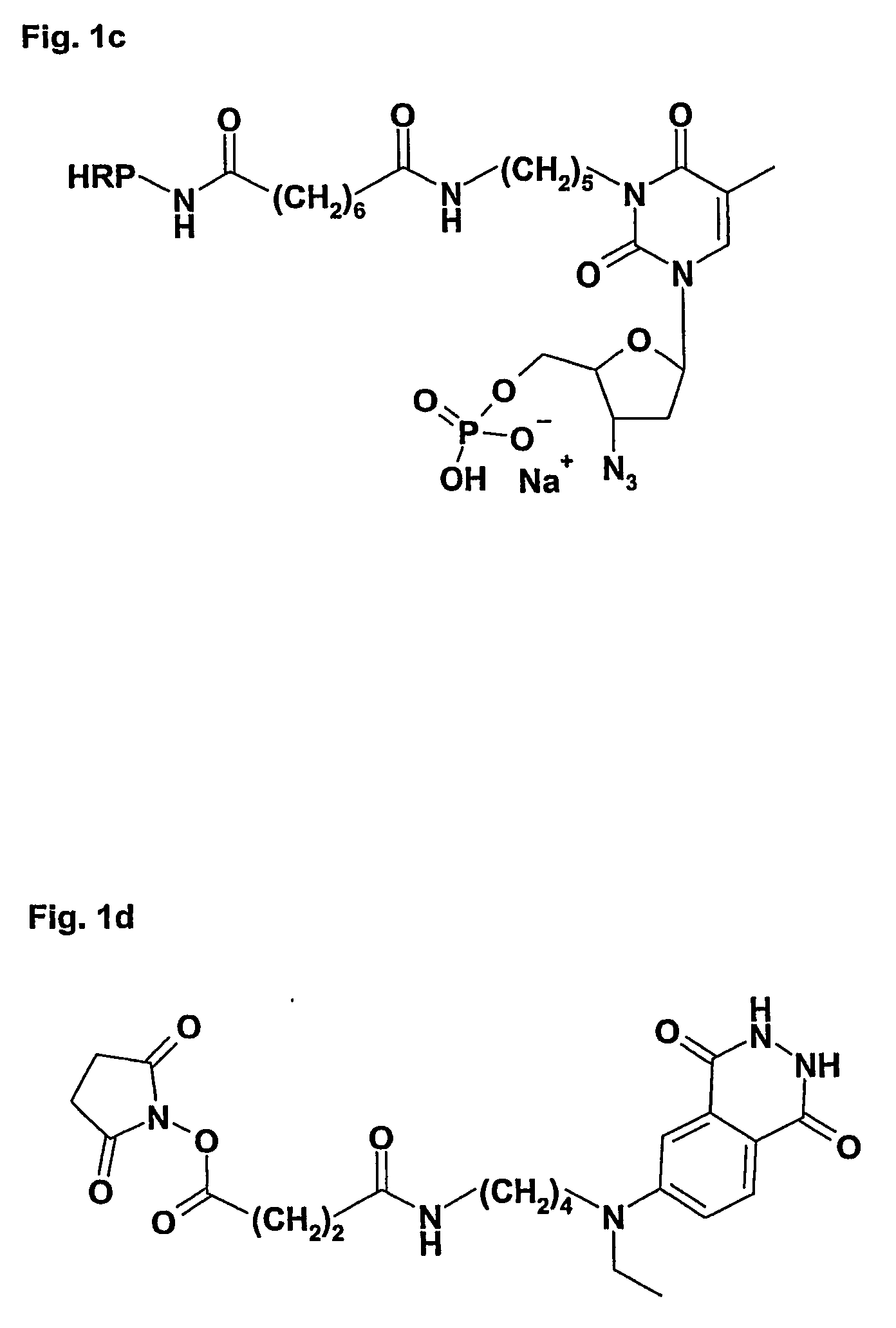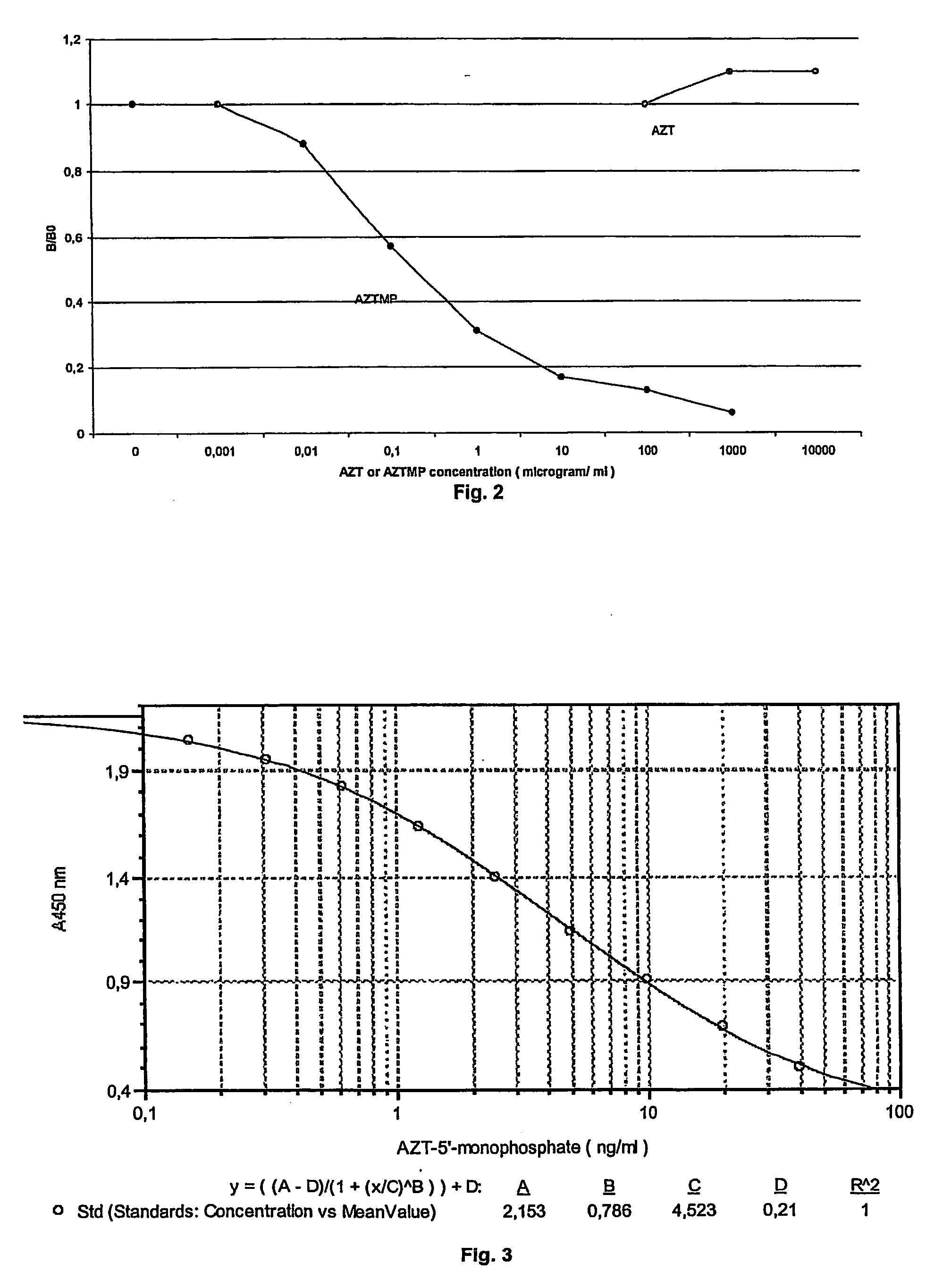Method for determination of thymidine kinase 1 activity and the use thereof
a kinase and activity technology, applied in the field of method for determination of thymidine kinase 1 activity, can solve the problems of false positive, time-consuming and complex handling, and lack of specificity of antigen based methods for dna synthesising cells
- Summary
- Abstract
- Description
- Claims
- Application Information
AI Technical Summary
Benefits of technology
Problems solved by technology
Method used
Image
Examples
example 1
Preparation and Characterisation of Antiserum Against AZT-Monophosphate (AZTMP)
[0100] The preparation of polyclonal goat-antiserum and polyclonal IgY from hen eggs was performed according to a published method used in the preparation of rabbit antiserum (39). An AZTMP derivative, AZXMP (3′-Azido-3′-deoxy-5′-monophosphate-3N-1-(5-amino-pentyl) thymidine) (39) (FIG. 1a), was synthesised. The AZXMP was coupled to the carrier protein KLH (Keyhole Limpet Hemocyanin) enhancing the immunological reaction against the AZXMP hapten to form an antigenic conjugate KLH-AZXMP. Glutaraldehyd (GA) has been used to mediate coupling of KLH to AZXMP. The reaction was carried out at 6° C. A 2%-GA solution was added drop wise to AZXMP and KLH and incubated for 24 hours (h) under agitation. Subsequently the solution was dialysed three times against 0.1 M PBS (Phosphate Buffer Saline) pH 7,4—resulting purified conjugate was frozen down to −80° C. until using the material.
[0101] Hens and goats were immun...
example 2
Preparation of a Stable Tracer Conjugate of AZXMP Coupled to HRP
[0105] AZXMP was coupled to HRP using DSS (Suberic acid bis (N-hydroxySuccinimide ester)). This includes incorporation of an 8-carbon chain linker. Firstly, AZXMP was coupled through its primary amino group to one of the two active esters on the DSS molecule resulting in AZXMP-DSS (FIG. 1b). In order to obtain an aequimolar coupling product an excess of 8 moles DSS per mole of AZXMP was used. The reaction was performed at 23° C. In 1:1 diluent with equal parts of 100 mM sodium borate buffer pH 8.8 and pure acetonitrile. The coupling reaction was terminated after 30-60 minutes by adding 20 mM sodium dihydrogen phosphate, adjusting pH to 4,6 with 3 M HCl, and injecting the solution on the separation column yielding normally in 60-70% of AZXMP-DSS. Purifications were performed on a C2 / C18 pepRPC reversed phase column (Amersham Biosciences). After adsorption under 20 mM sodium dihydrogen phosphate pH 4.6 the product was el...
example 3
Serum TK Measurement with Tritium Labelled AZT and Correlation to the TK-REA
[0112] In order to determine if serum TK can use AZT as substrate, an experiment was performed with 16 clinical patient serum samples (20 μl) mixed with 2 μL 3H-AZT (Ci / mmol Moraveck Inc, USA) and 20 μL reaction mixture containing 10 mM Tris-HCl (pH 7.6), 5 mM ATP, 5 mM MgCl2, 3.5 mM NaF, 2 mM DTT. The assay was performed 4 h at 37° C. and the amount of AZTMP formed was determined by DE 51 ion exchange paper method as described (9). Previous experiments had established that this amount of serum gave a linear reaction during the time period tested. The results as well as the results from the TK-REA assay are shown in Table 6.
TABLE 6Comparison of substrates for serum TK activitySample3H-AZT (CPM)Prolifigen ® TK-REA (U / l)17262.824503.139162.5421882.95171413.86166412.37180412.68214716.29917854.1101144754.611410734.212645858.113129371411413270692152943221620165239345
[0113] The results show an overall good corr...
PUM
| Property | Measurement | Unit |
|---|---|---|
| concentration | aaaaa | aaaaa |
| concentration | aaaaa | aaaaa |
| concentration | aaaaa | aaaaa |
Abstract
Description
Claims
Application Information
 Login to View More
Login to View More - R&D
- Intellectual Property
- Life Sciences
- Materials
- Tech Scout
- Unparalleled Data Quality
- Higher Quality Content
- 60% Fewer Hallucinations
Browse by: Latest US Patents, China's latest patents, Technical Efficacy Thesaurus, Application Domain, Technology Topic, Popular Technical Reports.
© 2025 PatSnap. All rights reserved.Legal|Privacy policy|Modern Slavery Act Transparency Statement|Sitemap|About US| Contact US: help@patsnap.com



